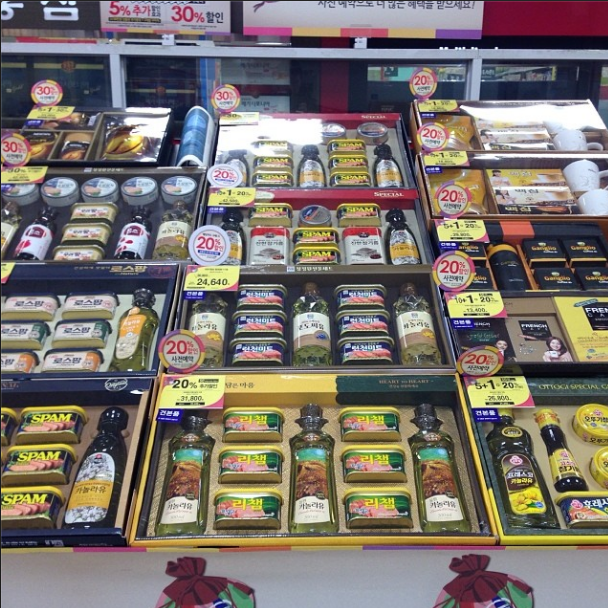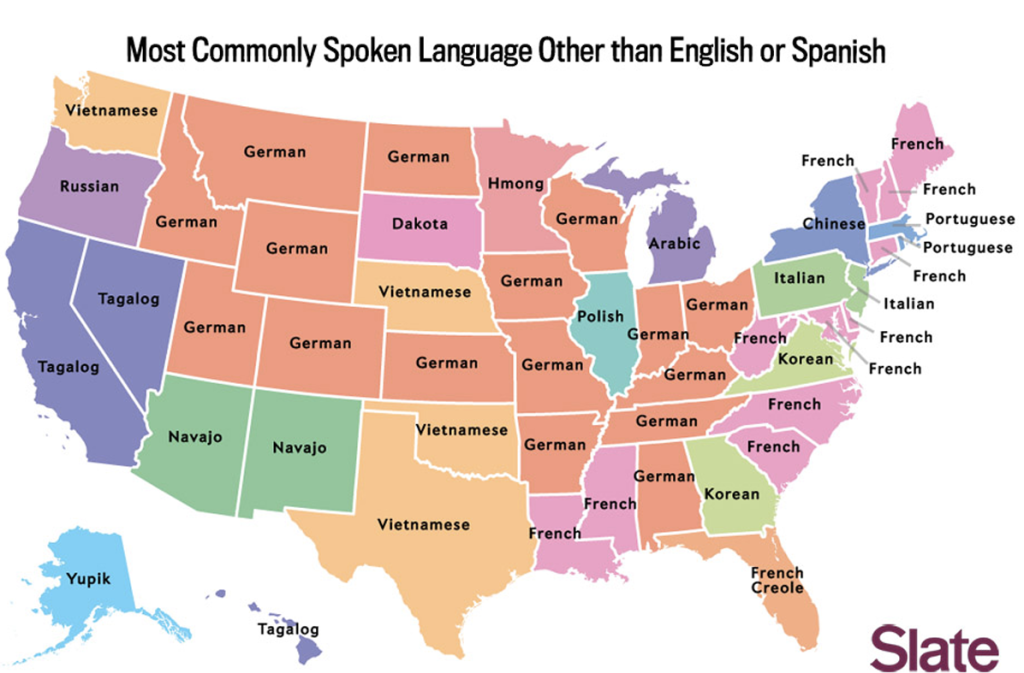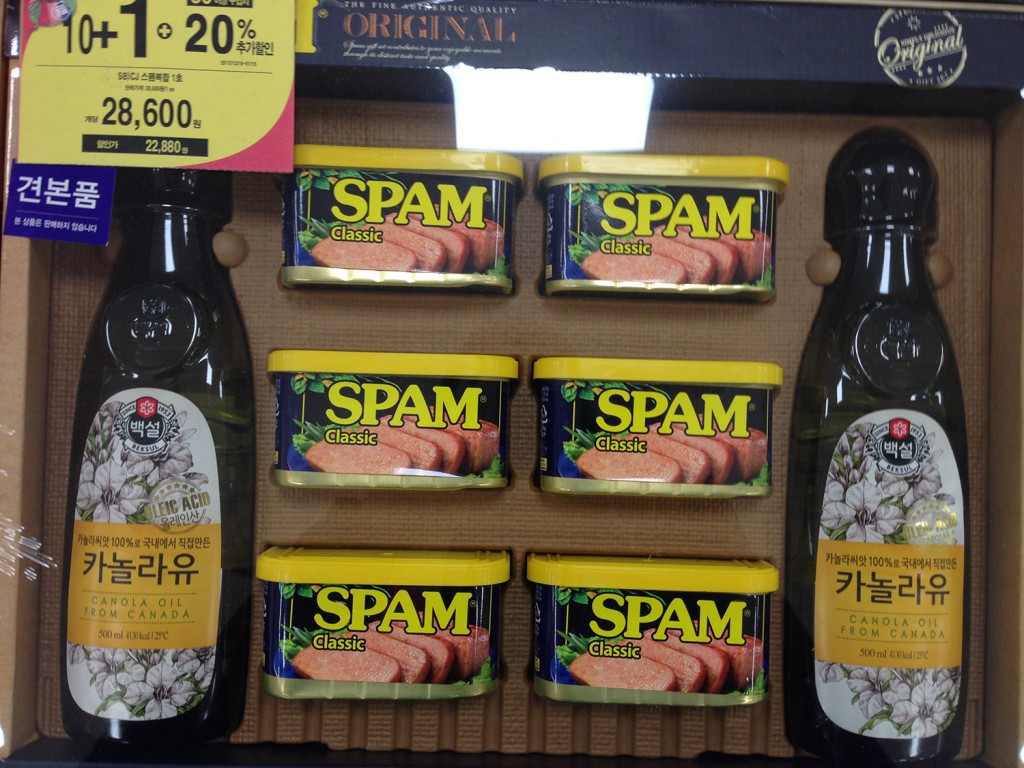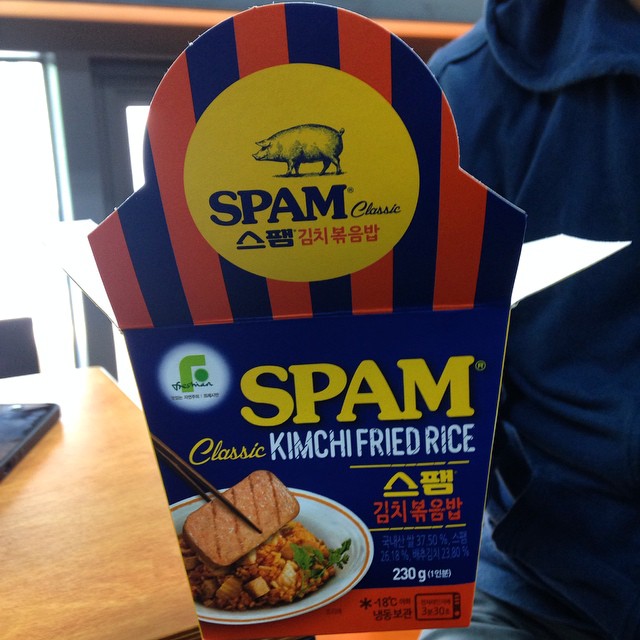
Say “Hello” to the 300$ (300.000 Won) watermelon.
The Shinsegae department store in Seoul offered around a Chuseok this exclusive
watermelon. Chuseok is the Korean Thanks Giving fest. It is Koreas most important holiday, like Christmas in western counties.
Category Archives: Interesting
Korean conquers Georgia and Virginia
Chimaek 치맥 Hype in China
When & How to Bow in Korea
Only in Korea: Making Boxes…Like a Boss!
Go to a Korean post office, and they can make you a custom box for your random stuff for cheap money.
Eatwatchers in South Korea
The latest trend in South Korea: Paying to watch online somebody eating.
With 1/3 of single person households in Korea this trends hit the nerve modern young Koreans. The video stream helps to avoiding the awkwardness of eating alone.
Theg in the Video makes 9000USD per month with her 3 times per day broadcast.
Korea Fact No.18: Korea loves SPAM
South Korea has become the largest consumer of Spam outside the United States, according to the local producer.

By CHOE SANG-HUN January 26, 2014
SEOUL, South Korea — As the Lunar New Year holiday approaches, Seoul’s increasingly well-heeled residents are scouring store shelves for tastefully wrapped boxes of culinary specialties. Among their favorite choices: imported wines, choice cuts of beef, rare herbal teas. And Spam.
Yes, Spam. In the United States, the gelatinous meat product in the familiar blue and yellow cans has held a place as thrifty pantry staple, culinary joke and kitschy fare for hipsters without ever losing its low-rent reputation. But in economically vibrant South Korea, the pink bricks of pork shoulder and ham have taken on a bit of glamour as they have worked their way into people’s affections.
“Here, Spam is a classy gift you can give to people you care about during the holiday,” said Im So-ra, a saleswoman at the high-end Lotte Department Store in downtown Seoul who proudly displayed stylish boxes with cans of Spam nestled inside. More …
The complete article about Korea and Spam
“In South Korea, Spam Is the Stuff Gifts Are Made Of”, by CHOE SANG-HUN January 26, 2014, NY Times.com
http://mobile.nytimes.com/2014/01/27/world/asia/in-south-korea-spam-is-the-stuff-gifts-are-made-of.html?_r=0&referrer
10 things South Korea does better than any county in the world.
By Frances Cha, CNN, November 28, 2013
1. Wired culture
Want to see what the future looks like?
Book a ticket to the country with a worldwide high 82.7% Internet penetration and where 78.5% of the entire population is on smartphones. Among 18 to 24 year olds, smartphone penetration is 97.7%. While they’re chatting away on emoticon-ridden messenger apps such as Naver Line or Kakao Talk, South Koreans also use their smartphones to pay at shops, watch TV (not Youtube but real-time channels) on the subway and scan QR codes at the world’s first virtual supermarket. Hyundai plans on rolling out a car that starts with your smartphone in 2015. Samsung in the meantime has been designing a curved phone. Crazy displays of technology already in place but not yet distributed can be seen (by appointment) at T.um, Korea’s largest telecom company SK Telecom’s future technology museum.
T.um, Jung-gu, Euljiro 2-ga 11, Seoul; +82 2 6100 0601
2. Whipping out the plastic
South Koreans became the world’s top users of credit cards two years ago, according to data from the Bank of Korea. While Americans made 77.9 credit card transactions per person in 2011 and Canadians made 89.6, South Koreans made 129.7. It’s technically illegal for any merchant in the country to refuse credit cards, no matter how low the price, and all cabs have credit card machines. All that flying plastic makes Seoul one of our top shopping cities in the world.
3. Workaholics
South Koreans are so used to studying — the country has the highest education level in Organization for Economic Co-operation and Development (OECD) countries, with 98% of the population completing secondary education and 63% with a college education — they can’t get out of the habit once they reach the work force. According to this quirky map from thedoghousediaries, Brazil sets the standard for FIFA World Cup titles and North Korea leads in “censorship,” but South Korea takes the crown for workaholics. You can see it in any Korean city, where lights in buildings blaze into the late hours as workers slave away. According to 2012 data from South Korea’s Ministry of Strategy and Finance, South Koreans work 44.6 hours per week, compared with the OECD average of 32.8.
4. Business boozing
When they’re not working, Koreans are celebrating their latest deals or drowning their sorrows in soju. While many leading companies are trying to curb the working/drinking culture, there are still plenty of bosses who drag their teams out for way too many rounds of soju/beer/whiskey “bombs.” Those who opt out are considered rude or hopelessly boring. Yes, Japan and a few other countries can stake reasonable claims to this title, but South Korea has stats to back up the barroom brag. Jinro soju was the world’s best-selling liquor last year, for the eleventh year in a row, with its home country accounting for most of the sales. The South Korean distilled rice liquor manufacturer outsold Smirnoff vodka, which came in second by 37.48 million cases.
5. Innovative cosmetics
When it comes to makeup and cosmetics, South Koreans can’t stop experimenting with ingredients or methods of application. Snail creams (moisturizers made from snail guts) are so 2011. Now it’s all about Korean ingredients such as Innisfree‘s Jeju Island volcanic clay mask and fermented soybean moisturizer. At VDL, Korea’s latest trendy cosmetics line, products change monthly. Right now, they’re pushing “hair shockers” — neon tints for hair — and nail polish with real flowers in it. Just as Korean men are less wary of going under the plastic surgery knife (see point 10) than their foreign counterparts, they also snap up skincare products and, yes, even makeup, namely foundation in the form of BB cream. South Korea is by far the largest market for men’s cosmetics, with Korean men buying a quarter of the world’s men’s cosmetics — around $900 million a year, according to Euromonitor.
6. Female golfers
The Economist posed a million-dollar question earlier this year. “Why are Korean women so good at golf?” The rankings are staggering. Of the top 100 female golfers in the world, 38 are Korean. Of the top 10, four are Korean. Inbee Park, 25, is the top-ranked player in women’s golf and was the youngest player to win the U.S. Women’s Open. In January, Lydia Ko, 14, set the record for the youngest woman to ever win a professional golf tournament. Chalk it up to crazy Korean competitiveness or to the Tiger Mom/Dad theory (golfer Se-Ri Pak’s father is infamous for making her sleep alone in a cemetery every night to steel her nerves), but the phenomenon certainly begs study. Widely thought to be a response to Korean domination of the sport, the U.S.-based LPGA passed a requirement in 2008 mandating that its members must learn to speak English, or face suspension.
7. Starcraft
One country’s hopeless nerds are among another’s highest earning celebrities. Starcraft is actually a legitimate career in South Korea, with pro gamers raking in hundreds of thousands of dollars in earnings in addition to endorsements. Since the game launched in 1998, nearly half of all games have been sold in South Korea, where boys, girls, men and women drop by for a night of gaming in giant video game parlors. There are cable channels devoted solely to the games, and the culture has led to approximately 14% of Koreans between ages 9 and 12 suffering from Internet addiction, according to the National Information Agency. To try to crack down, the government passed a ban dubbed the “shutdown law” or “Cinderella law” two years ago, prohibiting anyone 16 and younger from game websites. The ban has been widely ignored.
8. Flight attendants
Flight attendants from airlines around the world come to Korean airlines’ training centers to learn proper airborne charm. Ask anyone who’s ever flown a Korean airline and dare them to say the service isn’t the best they’ve ever had. It’s not just the sweet smiles that greet every little request, but the almost comical looks of suicidal despair when they somehow run out of bibimbap in the row before yours.
9. Blind dates
“When’s your next sogeting (blind date)?” That’s one of the most frequently asked questions of any Korean single. The standard answer is the epic horror story that was the last blind date, often involving a crippling Oedipus complex or intolerable physical flaw. Followed immediately by a chirpy, “Why, do you know someone you can set me up with?” Due to the high volume of blind dates, when Korean make up their minds, they move quickly. According to data compiled by South Korea’s largest matchmaking company, Duo, the average length of time of a relationship from the (blind) first date to marriage is approximately 10.2 months for working people, with an average of 62 dates per couple. In a survey conducted by Duo, working singles interested in marriage say they typically go on two blind dates a week. They should know. Of the top four matchmaking companies in Korea (there are 2,500 companies in the country), Duo has a 63.2% marketshare.
10. Plastic surgery
Whether it’s a lantern jaw, wide forehead or long teeth, there’s no feature doctors can’t beautify in the Asian capital for cosmetic surgery. Russians, Chinese, Mongolians and Japanese flock to South Korea on plastic surgery “medical tours,” not only for the skill of the surgeons, but for the good deals. “An average — not excellent — face-lift in the United States will set you back about $10,000,” Seoul National University Hospital plastic surgeon Kwon Seung-taik told CNN. “But in Korea you can get the same service for $2,000 or $3,000.”
Source: http://edition.cnn.com/2013/11/27/travel/10-things-south-korea-does-best/index.html?sr=sharebar_facebook
Korea Fact No.16: The Moon Rabbit
You know the man in the moon, but did you ever heard about the Moon rabbit?

The Moon rabbit in folklore is a rabbit that lives on the moon, based on pareidolia that identifies the markings of the moon as a rabbit. The story exists in many cultures, particularly in Aztec mythology and East Asian folklore, where it is seen pounding in a mortar and pestle. In Chinese folklore, it is often portrayed as a companion of the moon goddess Chang’e, constantly pounding the elixir of life for her; but in Japanese and Korean versions, it is just pounding the ingredients for rice cake.
An early mention that there is a rabbit on the moon appears in the Chu Ci, a Western Han anthology of Chinese poems from the Warring States period, which notes that along with a toad, there is a rabbit on the moon who constantly pounds herbs for the immortals. This notion is supported by later texts, including the Imperial Readings of the Taiping Era encyclopedia of the Song Dynasty. Han Dynasty poets call the rabbit on the moon the “Jade Rabbit” (玉兔) or the “Gold Rabbit” (金兔), and these phrases were often used in place of the word for the moon. A famous poet of the Tang Dynasty period, Li Bai, relates how: “The rabbit in the moon pounds the medicine in vain” in his poem “The Old Dust.”
Source: http://en.wikipedia.org/wiki/Moon_rabbit
Korea Fact No.15: Koreans Are the Most Widely Dispersed People In the World.
A recent study showed that Koreans are the most widespread diaspora in the world as of 2011, the Korea JoongAng Daily reported.
Korea had over 7.26 million people settled in 175 countries across the globe, according to the Overseas Korean Foundation. While China had a significantly larger diaspora, 45.4 million people, they were spread across just 130 countries.
The release of the study coincided with the 110th anniversary of the first batch of Koreans immigrating to the United States.

In the past four decades, the number of people emigrating overseas from Korea has increased by almost 10 times. In 1972, only 728,000 people had left Korea to settle in another country, but by 2011 the number jumped to 7.3 million people.
China has been the most popular destination for Koreans looking to leave the motherland and the Korean Ministry of Foreign Affairs estimates that 2.7 million Koreans live in China. The second most popular country for Koreans is the United States with 2.18 million people.
It has been 150 years since the first group of Korean emigrants crossed into Russia and settled there. The group consisted of 13 farming families from the northernmost border of Korea around Kyonghung County in North Hamgyong Province.









